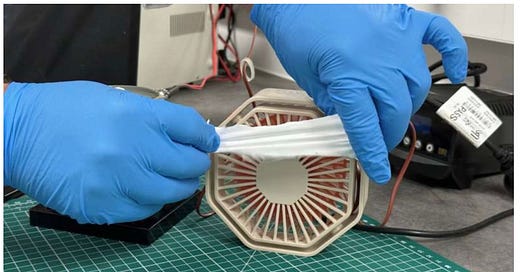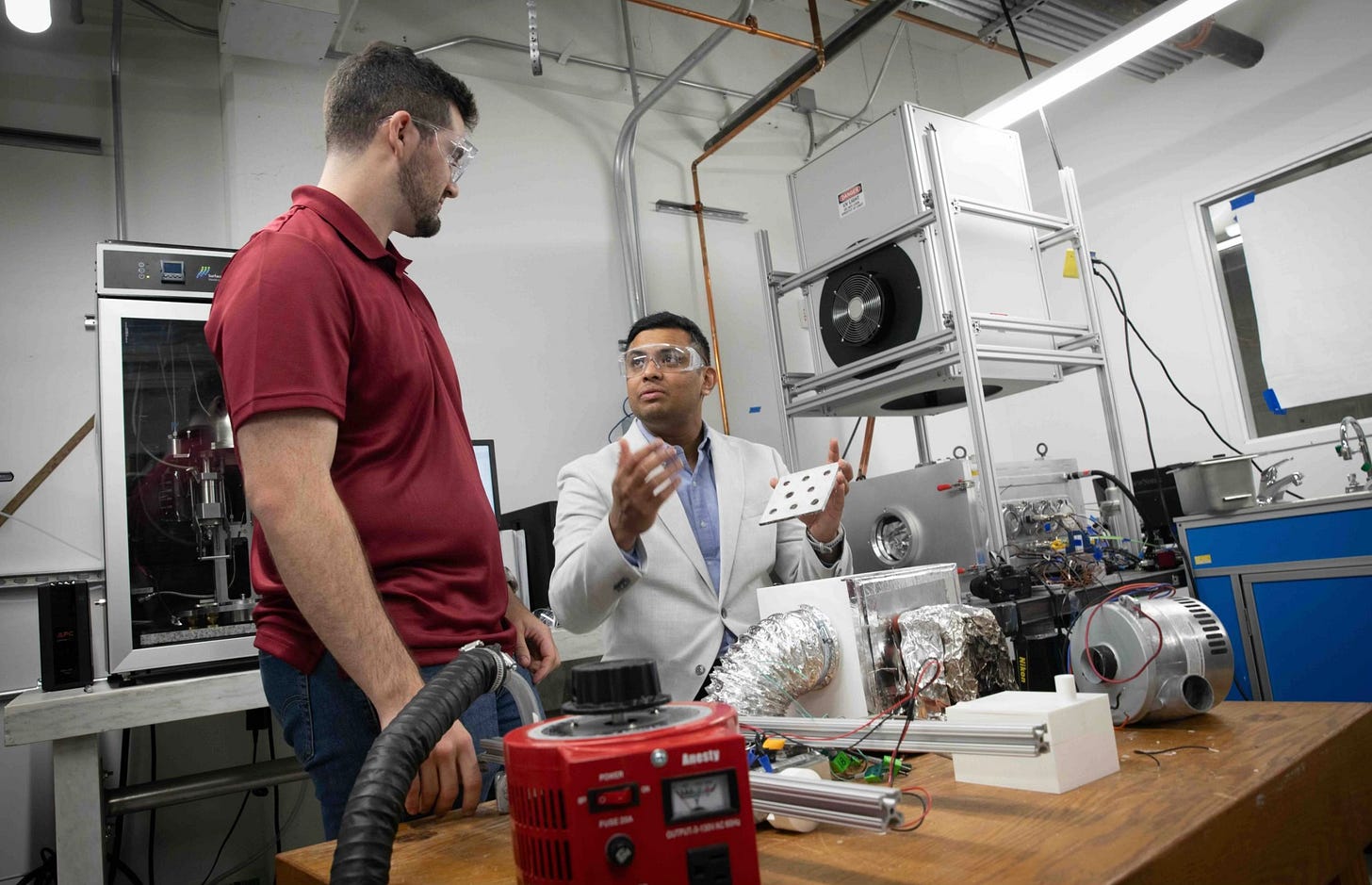Powering Air Con using Static Electricity, removing Water from Air and an Intelligent Fungus.
November 7
This week we investigate a new method for powering air conditioners using static electricity. We examine a new more efficient way to remove water from air. We discover a more effective way to remove gold from e-waste and finally we look into an intelligent fungus that learn, hold memories and make decisions.
Static Electricity running Air Conditioners?
A team from Royal Melbourne Institute of Technology and Riga Technical University in Latvia have found a practical use for waste polystyrene, helping run the aircon. Their invention uses wind and waste polystyrene to generate static electricity which could be used to recycle waste energy in air conditioners. The world generates more than 25 million tons of polystyrene packaging annually. Most of it ends in landfill.
The invention is a thin patch made from multiple layers of polystyrene about 1/10th the thickness of a human hair. Wind blowing on the patch was used to generate static electricity which could then be harvested. There is potential for the exhaust of air conditioning units to be used to generate this power which would then be recycled into the unit reducing the energy demand by up to 5%.
The team figured out how to make the insides of reformed polystyrene, rub across each other in a controlled way. When all the charges pull in the same direction it produces electricity. Plastics are made of millions of little strands. Placing two plastic films together knots the strands. When those knots break via movement there is a little bit of charge on each part of the bonds that break. The maximum voltage that was able to be produced was 230 volts which is comparable to mains voltage in homes but at much lower power.
The team has taken out a patent on the process and is now seeking industrial partners to help commercialize the product.
Water from Air
We have spoken before about devices that can capture the water in the air for drinking and irrigation purposes. A team at University of Nevada Las Vegas has developed a new technology that pulls larger amounts of water from the air in low humidity.
The technology captures water in a liquid salt solution that is suitable for subsequent processing into drinking water or energy production. The water is captured in a Metal Organic Framework which can be structured like lego blocks. The structure used, allows for gas separation. Once the water has been drawn from the air, heat is then applied to the solution which releases the water. The other advantage of the system is that only water is absorbed. Nothing else. No further purification is required.
The prototype device uses aluminum fumarate fashioned into panels that collect water as air is drawn through. The water molecules are trapped on the surface of the device which allows for easy separation.
Existing technologies that harvest water have low yields and diminishing returns below 30% humidity. The prototype produced 5 liters of water per day per kilogram of absorbent material in Las Vegas in the middle of a desert. The material will perform even better in a more humid environment.
There’s Gold in E-Waste
There is a significant amount of gold and silver in electronic waste. Unfortunately it is difficult and dirty to recycle these materials. Yields are low and the process generates a ton of toxic pollutants.
A team at the National University of Singapore working with Manchester University and Guangdong University of Technology have developed a type of sponge made from graphene oxide and chitosan (made from prawn shells and an alkaline such as sodium hydroxide) that can be used to extract gold from electronic waste.
Both of the components of the sponge have been used to extract gold in other settings. Graphene can absorb ions and chitosan is a well known reducing agent (in this case used to convert the gold ions into their solid form). The two materials were made into a composite by allowing the chitosan to self assemble on the two dimensional graphene flakes. The gold ions are absorbed into the graphene and the chitosan converts them into solid gold allowing for easy collection.
The team claims that the sponge can remove approximately 10 times the amount of gold than that of any other known extraction process.
A Fungus that can Recognise Shapes
A team in Japan has discovered that an obscure fungus called Phanerochaete velutina can recognise shapes and communicate information about its surroundings throughout its fungal network. The team says that the fungus can learn, hold memories and make decisions.
The team conducted various experiments where they arranged various small wooden blocks in different shapes and allowed the fungus to spread within the shapes. As the fungus spread the team found that it was able to make important decisions based on the type of arrangement of the blocks. Instead of spreading from a central point they were able to change how they spread out to fit the shape more effectively. They concluded that this demonstrated a rudimentary intelligence.
When the fungi were placed in a circle arrangement of blocks they were able to figure out where the blocks were and then pass that information to the rest of the network as the fungi never moved out of the network. The fungi seemed to realise that there were no blocks in the center of the circle. The team concluded that this was evidence of an understanding of the spatial arrangement of the blocks.
This discovery may help with how we study microscopic organisms like slime molds. It may also help with research into better brain organoids. A Swiss startup has claimed to create the world’s first bioprocessor using remote access to 16 human brain organoids. More on that in a future newsletter.
Paying it Forward
If you have a start-up or know of a start-up that has a product ready for market please let me know. I would be happy to have a look and feature the startup in this newsletter. Also if any startups need introductions please get in touch and I will help where I can.
If you have any questions or comments please comment below.
I would also appreciate it if you could forward this newsletter to anyone that you think might be interested.
Till next week.






